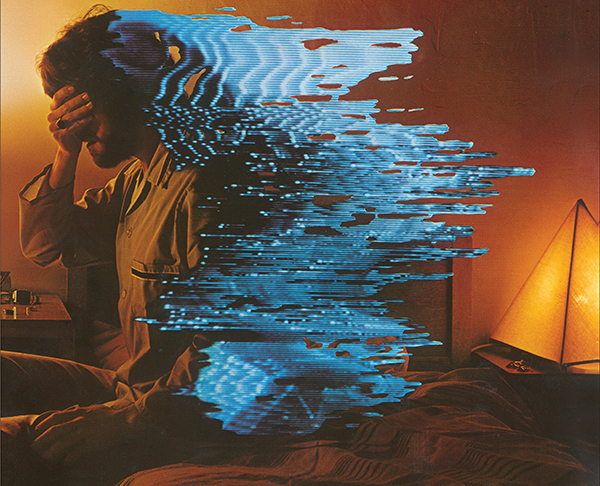Alan Parsons Tells Us Tales of Atmos Remixing and Imagination for The Alan Parsons Project’s Deluxe Pyramid Box Set
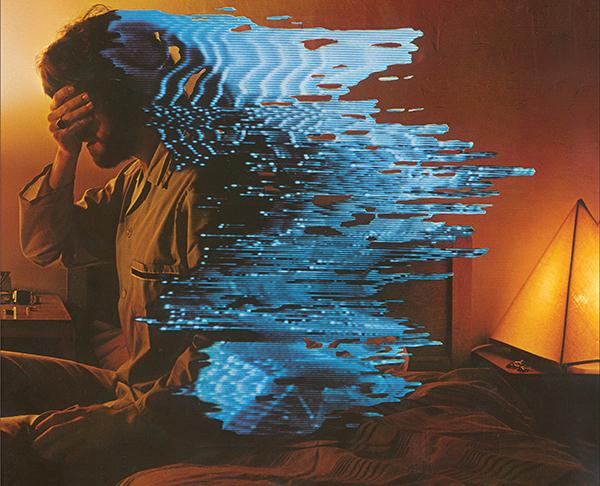
Alan Parsons has long been acknowledged as a pioneering surround-sound mixer/producer all the way back to the early days of quad, and now he’s finally triangulated his sights on the kind of project we’ve all been waiting for—namely, by taking the maiden Dolby Atmos remixing voyage into his own deep catalog as the co-mastermind behind The Alan Parsons Project. (APP co-founder, lyricist/vocalist/pianist Eric Woolfson, passed away at age 64 in 2009.)
Parsons’ initial APP-in-Atmos foray appears on the Blu-ray that’s included in the new 4CD/1BD/2LP Super Deluxe Edition box set for their May 1978 Arista album, Pyramid (SRP: $175.99), which was released on August 23, 2024, via the ironically named Cooking Vinyl label. Observes Parsons, with a bit of a wink-nudge chuckle, “This one is on Cooking Vinyl, which is strange—that a company calling itself a vinyl company would be putting out Blu-rays. It’s extraordinary.” (To be fair, Pyramid does appear on 2LPs at 45rpm in the box set itself, as half-speed-remastered by Miles Showell at Abbey Road Studios, and the album has also been released separately in a number of color-variant 1LP editions at 33⅓rpm, including clear, gold nugget, transparent blue, and transparent yellow vinyl—with each LP variant ranging from $35-$65 and up, depending on where you look.)
Regardless of the nomenclature, Parsons knows how to, yes, truly cook in Atmos, bringing tracks like “Voyager,” “Can’t Take It With You,” “Hyper-Gamma-Spaces,” and “Shadow of a Lonely Man” to literal new heights. In short, Parsons’ Pyramid Atmos remix ascends and envelops you in all the ways it should—and shrewdly avoids the pitfalls of how it shouldn’t.
During a recent Zoom interview to his home in Southern California, Parsons, 75, and I discussed his overall Atmos goals for Pyramid, what he was able to “correct” in Atmos, and his Atmos remix wishlist for other artists. But the dream seemed to end just as soon as it had begun / Was I to know? / For the last thing of all that was on my mind / Was the close at the end of the show. . .
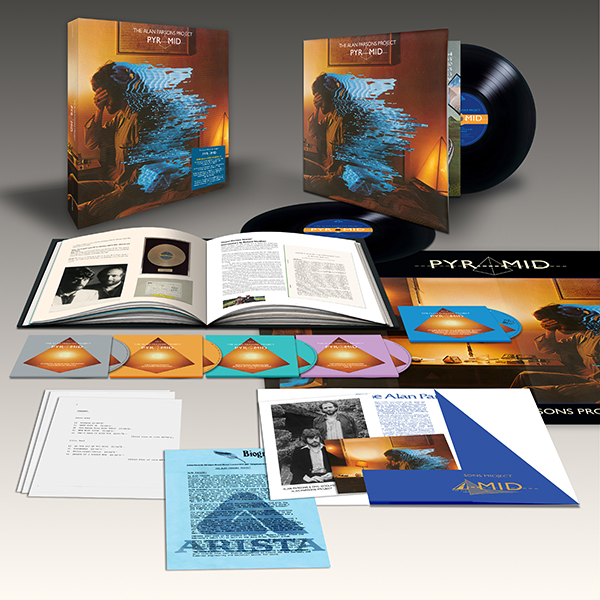
Mike Mettler: From your point of view, since Pyramid is officially the first Atmos remix you’ve done of something from your own catalog, what did you want to accomplish with it?
Alan Parsons: Well, Atmos is a very new technology—and not many people, particularly in homes, have it. I mean, what home is ready to put 11 speakers in the living room? (laughs)
Mettler: Except for our living rooms, right? (both laugh)
Parsons: I spent a lot of time listening to what was out there in Atmos. There’s some really good stuff, and there’s some really bad stuff. (chuckles)
Mettler: That’s so true. Were there any benchmark Atmos mixes for you that you were like, “Okay, this is the right way to do it”?
Parsons: “Rocket Man,” by Elton John, was a revelation. [Originally on Elton John’s May 1972 album on Uni, Honky Château, “Rocket Man (I Think It’s Going to Be a Long, Long Time)” can be heard in Atmos on Apple Music here.] And I found there’s been a lot of difference between mixes on the bottom end. Sometimes it’s booming out and you have to turn it down to make it right—and on other mixes, it’s very weak. There doesn’t seem to be a real standard level for the bottom end—for the subwoofer. But, to answer your first question, I approached mixing Pyramid in Atmos with the hope that we could do something really, really interesting with the format for the first time.
And, as a piece of news I can break to you, I’ve just remixed, in Atmos, the 1994 live performance of Pink Floyd’s [March 1973 landmark LP] The Dark Side of the Moon.
Mettler: Well, I’ll certainly be looking forward to hearing that one! Is that the show from the Pulse tour they re-released on Blu-ray a few years back [in 2022]?
Parsons: It is the same concert, yes. It’s a re-edited video, and, obviously, new audio—stereo, 5.1, and Atmos. [Pulse was originally released as separate 2CD and 4LP sets in May 1995, on Columbia, and later appeared on both DVD and Blu-ray. No release date has been announced as of yet for the new Pulse mixes Parsons mentions here—but we’ll be all over it/them whenever it/they become available!]
Mettler: Oh, good. I saw that tour in Giants Stadium back in the day [on July 17, 1994, in East Rutherford, New Jersey; the venue is now known as MetLife Stadium]. I called it the “Pink Floyd Action Figures Show” because we were probably seated about five-to-ten rows from falling over the edge way up top in the back. (chuckles) At least we got to experience the live quad and other height-channel elements, as I’ll call them, in those days.
Mettler: Right out of the box of the Pyramid Atmos mix, I love how the first track, “Voyager,” opens up—it just kind of lifts up, and then you bring us right into it. I’m enveloped by how “Voyager” opens the proceedings, which then leads directly into the perfectly named “What Goes Up. . .” right after it. You couldn’t have necessarily anticipated how that envelopment would go back in 1978, but tell me about the process of how you had to both deconstruct and reconstruct your original mixes for this project.
Parsons: Well, it was great. I mean, it’s been great for all the other albums that I’ve only got as far as mixing in 5.1. We did [June 1976’s] Tales of Mystery [and Imagination]. We did [November 1980’s] The Turn of a Friendly Card, we did [February 1984’s] Ammonia Avenue. And we did [May 1982’s] Eye in the Sky, of course—and that’s the one that won my first Grammy after, I think, 13 nominations. We finally won. (chuckles heartily)
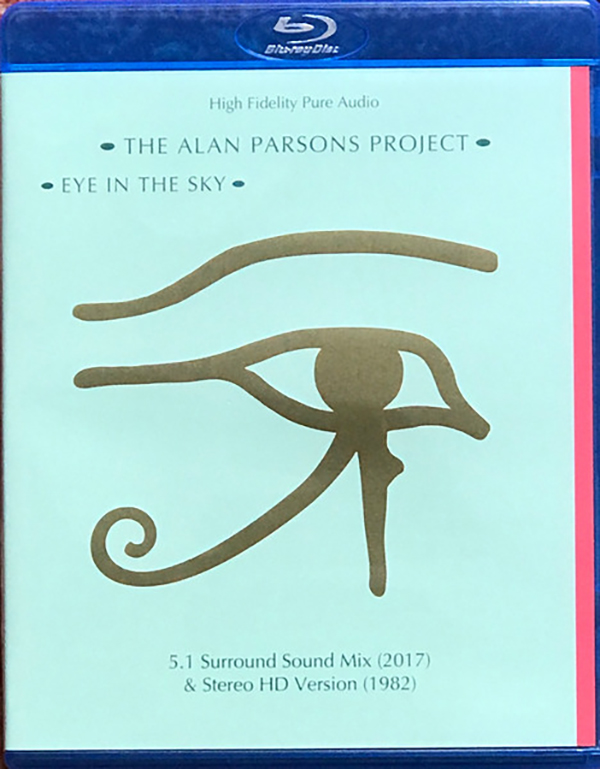
[MM notes (and please, settle in for all the following APP surround-related details): The 24-bit/96kHz DTS-HD Master Audio 5.1 mix of Eye in the Sky appears on the Blu-ray included in that album’s 35th anniversary 3CD/2BD/1LP/1 7-inch 45 Collector’s Edition box set from Arista/Legacy in December 2017 (and was later released separately as a standalone Blu-ray in 2018)—and for that remix, Parsons, along with surround mastering engineers Dave Donnelly and PJ Olsson, won the Grammy Award for Best Immersive Audio Album in February 2018. You can read my review of the Eye box set here. The 24/96 DTS-HD Master Audio 5.1 mix of Tales of Mystery and Imagination – Edgar Allan Poe is on the Blu-ray included in its 40th anniversary 3CD/1BD/2LP box set from UMG International in December 2016 (and was released as a standalone High Fidelity Pure Audio Blu-ray, also in December 2016). The high-resolution 5.1 mix of The Turn of a Friendly Card is on the Blu-ray included in 3CD/1BD box set from Esoteric Recordings in February 2023 (and was later released as a standalone Blu-ray in May 2023). Finally, the high-resolution 5.1 mix of Ammonia Avenue is on the Blu-ray included in that album’s 35th anniversary 3CD/1BD/2LP box set from Esoteric Recordings in March 2020 (and was also concurrently released as a standalone Blu-ray in March 2020). Got all that? Good!]
Mettler: Well, you know, 13 is a lucky number. That’s my view on it. (more laughter) It totally worked out for you.
Parsons: Yes, well, it’s always great to go back to do these mixes. It’s a very nostalgic experience. You remember things that happened during the recording sessions of particular tracks, and you hear it when you listen to the outtakes. You also get a vibe of what the atmosphere was like at the time. Generally speaking, it was always very happy—all smiles all around, and just people really enjoying it. Lots of lots of laughter and jokes and stuff. So, it was fun times.
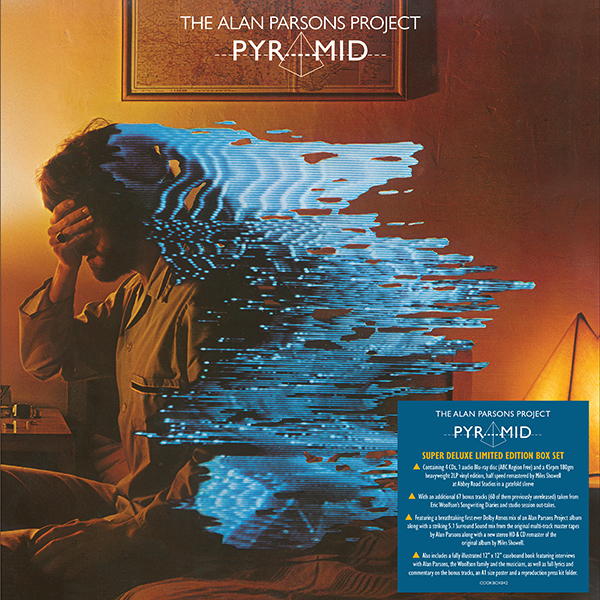
Mettler: Yeah, I’ll bet! Well, one of the things I like about your box set presentations in general is you give us all sorts of outtakes, and I feel like I hear the evolution of songs in a way that gives me better appreciation of the final mixes. I know some artists don’t love doing that, but I like hearing how songs evolve because you can hear things like, “Oh, this mix isn’t quite there yet. He somehow figured out how to get it from third base to home,” or pick your own sports cliché. You ultimately got what you wanted, but you had to go through 10 or 15 takes to get it to where it needed to be. (Parsons nods) A good example of an Atmos mix that’s exactly right to my ear is the one you did for “In the Lap of the Gods,” which absolutely puts me in the moment and in the middle of what’s going on there. That must have been a special track to get just the way you wanted it.
Parsons: Yeah, it was fun. I mean, the choir—we had established a choral sound on the previous two albums [the aforementioned Tales, and July 1977’s I Robot], but I think it worked particularly well here. It was great to have them singing words. On previous occasions, it had been “oohs” and “aahs” from the choir. (chuckles) But now we have the words, “hail to the king”—and that’s fun.
Mettler: Yeah, yeah—and it’s really well done, I have to say. Was there a track on Pyramid that revealed itself differently to you as you did the Atmos remix for it?
Parsons: I think, possibly, the opening track, “Voyager.” We did a few little, tiny corrections on those woodblock sounds. They were slightly off, timing-wise, on the original. There are one or two little repairs that we did for timing, and stuff.
Parsons: In particular was also the choral section for “In the Lap of the Gods,” the one I just drew attention to—the “hail to the king / praise to our king” parts—where the strings were sort of baroque and very, very fast, like (mouths the faster string part). That always annoyed me as being slightly behind. When working to a recorded track, string players tend to be a little lazy, and then the conductor has to work very hard to get them back on track. I have managed to pull those strings ahead—and it’s a piece of cake now, on a digital workstation. In this case, I just highlighted it and dragged the file to the right side to get it in time.
When you’ve literally gone back to the analog tapes—I mean, we worked from high-quality digital transfers of the analog tapes, but all the tracks remain as they were on the original—sometimes, there’s no logic at all. You’ll find the left side of the piano on Track 7, and the right side on Track 23. (chuckles) It just makes no sense. But the nice thing about working with a digital workstation is that you can put everything in a much more sensible and orderly fashion to mix it.
Mettler: Well, I would say that, on the last track, “Shadow of a Lonely Man,” it seems that the payoff of what we get in the final section is even more dramatic and more emotional, especially if you’ve been paying attention to the arc of the storyline of the whole album. The second time I got through it in Atmos, I actually had to stand up and turn it off for a minute because it really got me, if I’m being honest about it.
Parsons: Yeah, I’ve seen a couple of tears when we’ve been playing it live. (chuckles) Yeah, I’m very pleased with that last song. It really came out well, and like I said, other people have said just what you’ve said—it hits a nerve.
Mettler: Yeah—and, like I said, I can sure attest to that. We already have 5.1 surround versions you’ve done of the other Alan Parsons Project catalog entries you mentioned already. Will you revisit any of those APP releases in Atmos, or will you do an album you haven’t done anything at all yet with next? Do you have a plan?
Parsons: Umm, I’m waiting for the phone to ring and the check to arrive, so. . . (chuckles)
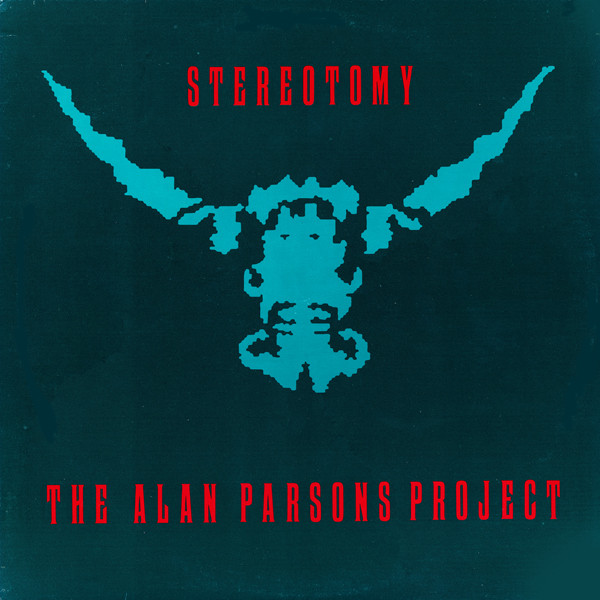
Mettler: Okay, you gotta get paid first. (Parsons chuckles) Well, I would say, if you wind up doing—oh, I’m just going to pick a random title like [November 1985’s] Stereotomy, would that have to be renamed Atmosotomy?
Parsons: (laughs heartily) Oh, that album was all digital, so it would probably be quite, quite easy to revisit that one.
Mettler: Yeah, okay, good—add it to the list. And you haven’t done [September 1979’s] Eve in surround or Atmos yet either, right?
Parsons: No, not yet. Can I reverse the interview for one second, and ask you if there’s anything else you’ve noticed as being particularly good of the Atmos mixes that are out there?
Mettler: Of the ones that are out there, one compatriot whom you’ve worked with before, Steven Wilson, has done some incredible Atmos mixes. The last Porcupine Tree album, [June 2022’s] Closure / Continuation, is particularly bold and impactful in Atmos. And then that one solo track that he did with Elton John on it, “Personal Shopper,” from [January 2021’s] The Future Bites—boy, that’s just amazing in Atmos. [I spoke to Wilson about the Atmos mix for TFB here, and about PTree’s C/C in Atmos here.]
Parsons: Yes, Steven is really just doing great work. Did you hear [February 2013’s] The Raven That Refused to Sing (and Other Stories) in 5.1?
Mettler: Oh, yeah—and that’s another great 5.1 mix of his. One of the last times he and I spoke, he made mention that Raven is on his slate to get around to doing in Atmos. And speaking of Raven—if you don’t drop a few tears listening to that title track in surround, then I don’t know what to say. It’s still quite affecting, and I look forward to hearing what he does with it in Atmos. [Parsons was the associate producer and recording engineer on the original 2013 Raven release.]
Parsons: Yeah, Steven’s getting a lot of the work I wish I could get. (chuckles) Anybody in the industry reading this—I’m available to do Atmos mixes. Thank you! (smiles)
Mettler: Hey, I’m all for you getting more Atmos work. Do you have a wishlist of albums you’d like to get your hands on to do in Atmos, whether they’re by artists you worked with like Ambrosia or Pilot, or something else that you just go, “I can really hear this album in Atmos if I did blank with it”?
Parsons: I think most of the ones I would have liked to have done have already been done. I’m a huge fan of The Who, and I would love to have done [May 1969’s] Tommy and [1971’s] Who’s Next. Now, I’m not sure—are they out there? Is Who’s Next out there in Atmos?
Mettler: Actually, believe it or not, our man Steven Wilson did the Atmos mix for Who’s Next, because they did a 50th anniversary box set for it last year. [You can read my review of that box and Wilson’s Atmos mix of it here.] But I don’t think Tommy has gotten Atmos-ized yet, so that one is probably available—and Steven’s super-busy right now, so maybe he can’t do that one. Looks like Tommy just might be yours. [The current 5.1 version of Tommy is on the Blu-ray in the 2013 3CD/1BD Tommy box set and concurrent standalone High Fidelity Pure Audio Blu-ray release.]
Parsons: (laughs) Oh good! Bob Clearmountain is the same. Apparently he’s inundated with requests for doing Atmos.
Mettler: Oh yeah, Bob and I talked a lot about his surround-sound mixing and future Atmos plans when we discussed the 5.1 mixes he did for all of The Band’s box sets in recent years [which you can read more about here]. Now, you tend to work with a number of different vocalists per album, so I’m wondering if, when you were doing the Pyramid Atmos remix, you had to be mindful to bring out the differing character of, say, Lenny Zakatek [who sang “One More River”] versus John Miles [who sang “Shadow of a Lonely Man”]. Did you have to think about, “What’s the difference between Lenny’s track and John’s track?” Did any examples of, like, “Okay, I have to do this for John, and this for Lenny,” for example?
Parsons: Well, I’m afraid I can’t actually say there’s any real truth in that. But I obviously worked hard to make sure all the vocals were as clear and as perfect, timing-wise and pitch-wise, as they could be. I did the occasional little pitch cheat with [Celemony] Melodyne. Are you familiar with what Melodyne is? It’s a very, very clever piece of software that allows you to take a flat note from a vocal and put it back in tune. Now, I do have to say the standard of singing was actually very high on the Pyramid album, so we didn’t do very much with it. But if you have the opportunity to make it perfect, then why not?
Mettler: Yeah, why not? I’d also say a track like “Pyramania,” which has a different type of, we’ll say, attack during the choruses—you had to make sure those ack-ack-acks, if you will, hit properly, and in a very precise way.
Parsons: The ack-ack-acks, yes. That was what they were calling, in classical music, the scherzo—the joke, the sort of tongue-in-cheek comedy number. (chuckles) I’m trying to find the word, but it was dedicated to a fashion at the time known as Pyramid Power. And it was a very popular notion that, if you put, say, a bottle of milk inside a pyramid, it would not go sour. I mean, it was ridiculous, really—but it was fun. I’ve compared Pyramid Power with the Pet Rock. Do you remember the Pet Rock?
Mettler: Oh yeah. I remember seeing the TV commercials for it and the boxes they came in, and however much people paid for them. Ahh, the things we used to do! (both chuckle)
Parsons: They were making little metal pyramids at the time as well, so. . . (more laughter)
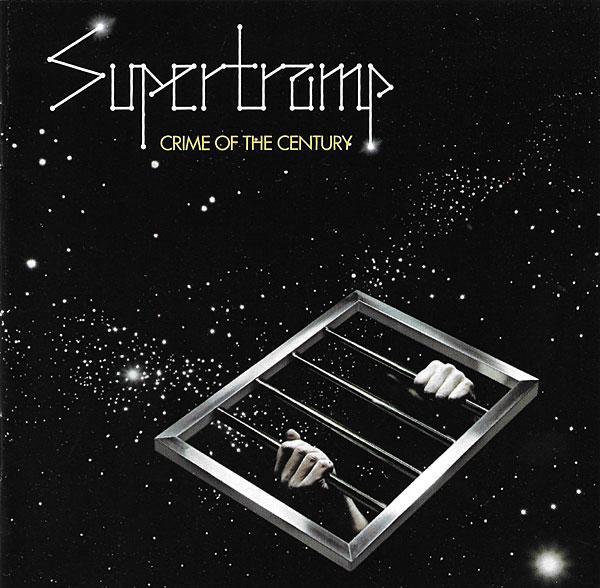
Mettler: You know, I just thought of an album that would be perfect for you to do in Atmos, and it’s never even been put into surround—Supertramp’s Crime of the Century [released October 1974, on A&M]. That album is beautifully perfect for that.
Parsons: Oh, I would love to do that—and [March 1979’s] Breakfast in America too.
Mettler: Yeah, do both! They should have you do both. [Former Supertramp vocalist/guitarist/pianist] Roger Hodgson and I have spoken about this before [some of which you can read about here]. And you might as well do [April 1977’s] Even in the Quietest Moments too, while we’re at it.
Parsons: I know how to reach Roger. I think I might do that, and contact him about this.
Mettler: Please do. That whole mid/late-’70s album stretch of Supertramp’s catalog would be so great to hear in Atmos, and I know you’d do them all in a way that wouldn’t sound weird or gimmicky.
Parsons: Well, that’s the secret of Atmos—not to be too gimmicky. I mean, you can stick all kinds of stuff in the “upstairs speakers,” as we call them, but it has to be subtle. It just has to be.
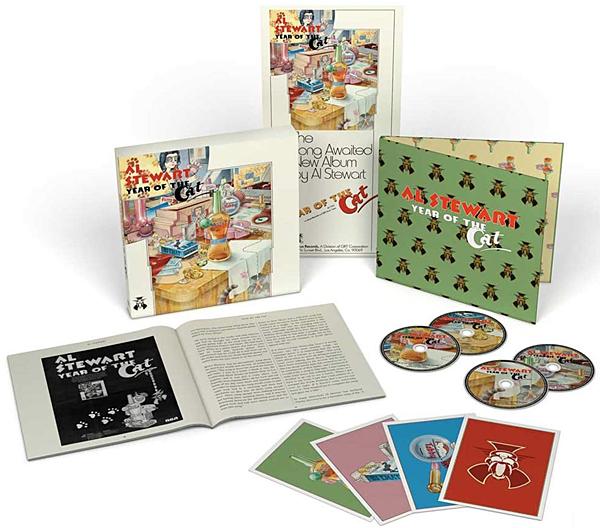
Parsons: That reminds me of a sort of dilemma I had when I was mixing Al Stewart’s [song] “Year of the Cat” [in 5.1 for the DVD included in the March 2021 3CD/1DVD 45th anniversary Year of the Cat box set from Esoteric Recordings]. It has a very long piano intro. If I’d put that in the front left and right speakers, people would’ve just said, “Well, it’s just stereo. This is a stereo mix.” So, I made the bold decision to put it in the back. (chuckles)
Mettler: Yeah, I get it—but that call of yours was okay, in this particular case. I loved hearing “Year of the Cat” that way in surround. [You can read my review of that box set and Parsons’ surround remix of it here.] So, again, when it comes to your catalog, could we cajole you to do maybe [September 1979’s] Eve next? I mean, “Damned If I Do”—I can almost already hear what that should sound like in Atmos.
Parsons: The most likely one next is [July1977’s] I Robot, to be honest.
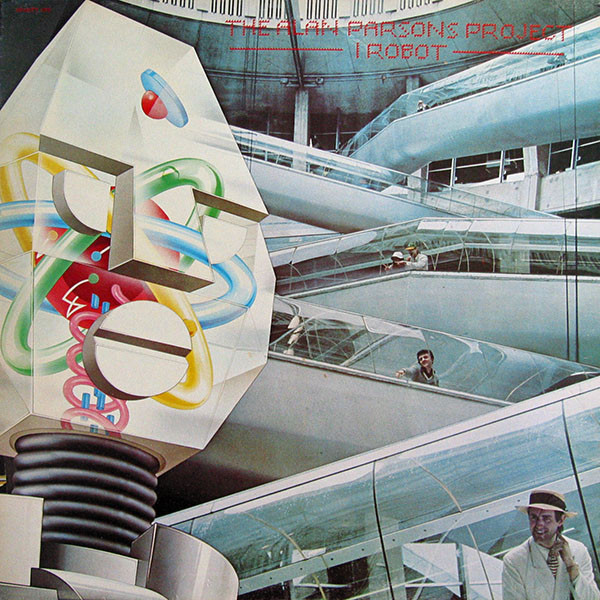
Mettler: Oh yeah, how did I skip right by that one? Boy, that’s perfect. I’m all for that.
Parsons: That was the second album and the first for Arista, so I think they’ll be pleased if we would do that.
Mettler: Yeah, well, I vote for that—and I also vote for a return to [June 1976’s] Tales of Mystery and Imagination so we could hear “The Raven” in Atmos. Maybe that’s a test Atmos mix you can just put out there, you know, just for fun.
Parsons: (laughs) I’ll go searching for a budget for it. (continues chuckling) I might consider doing some of the more recent stuff as well—Alan Parsons albums, not just The Alan Parsons Project ones.
Mettler: Oh, good. Certainly, an album like [September 1999’s] The Time Machine has some very interesting pieces on it to put into Atmos.
Parsons: I’ll go looking for it, and for people to entice me into doing it. [October 1993’s] Try Anything Once would be good too.
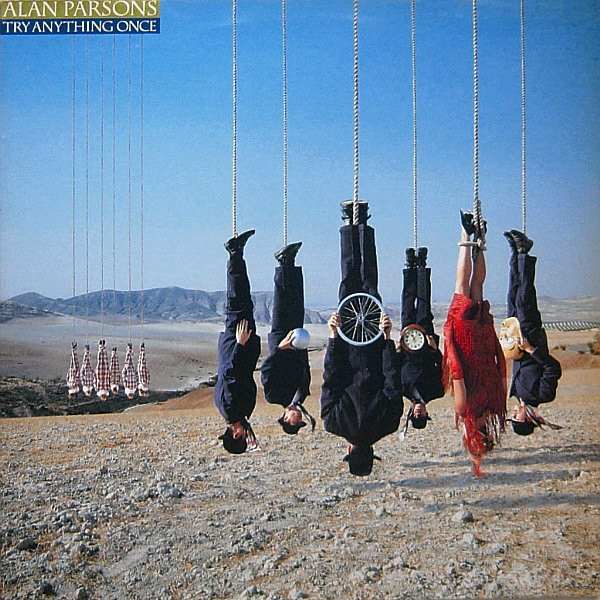
Mettler: Agreed—and I love the cover art for that one too. Hipgnosis did it, right?
Parsons: Yes. In some versions of the artwork, there’s a girl hanging upside down—and that’s a piece of trivia. It’s [Pink Floyd drummer] Nick Mason’s daughter, Chloe.
Mettler: I did not know that! And if re-entering the Ambrosia universe was possible, those first couple of albums of theirs that you worked on seem to be Atmos-able too.
Parsons: I only produced their first two albums [as co-producer/mixer of February 1975’s Ambrosia, and producer of September 1976’s Somewhere I’ve Never Travelled]. I’ve actually been working with [former Ambrosia lead vocalist/guitarist] David Pack just recently. He’s out on his own now working on a new album, and on a documentary film as well.
I’d love to do those two Ambrosia albums in Atmos—but there’s a bit of a problem, because some of the tapes have gone missing from the first album. I think the second album is probably all there. But, yeah, know there’s a case for a greatest hits or something from Ambrosia in Atmos.
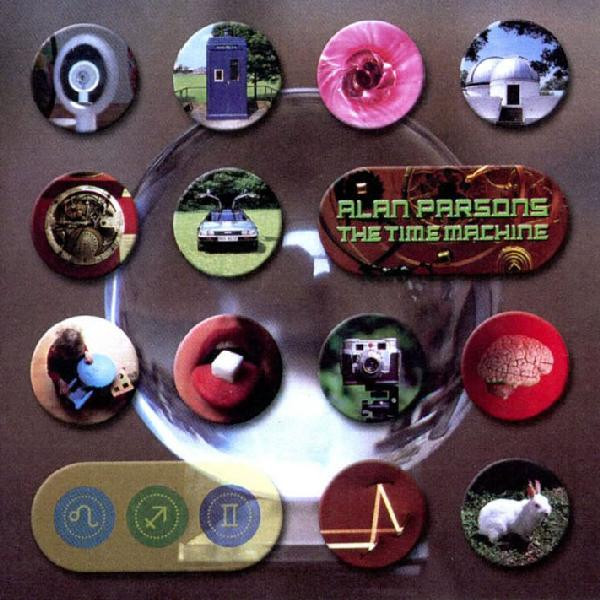
Mettler: I’d love that. I know you didn’t work on their Life Beyond L.A. album [released in August 1978], but I’d vote for you to Atmos-ize the title track for that greatest hits collection of theirs you suggested—but I digress. Anyway, to wrap things up, let me give you one final broadstroke question that I ask pretty much everyone I talk to. I want to throw us 50 years into the future, so we’re now in 2074. And, as I like to say, we probably aren’t physically on the planet then, unless some weird science is going on. (chuckles)
Parsons: (laughs) I’m pretty sure I won’t be around in 2074.
Mettler: Yeah, me neither. (more laughter) But however people listen to music in those days to come, and they type in “Alan Parsons” or “Alan Parsons Project” into whatever their listening device is then, what kind of listening experience do you want a future listener to get from your music?
Parsons: I would hope that I could be considered a reasonable talent for the late-’70s and early-’80s. Stylistically, I would think we would represent that to a degree. And I’d be glad if they, 50 years from now, wanted to hear music from the late-’70s and early-’80s. I’d be glad if they would visit my stuff in that context.
